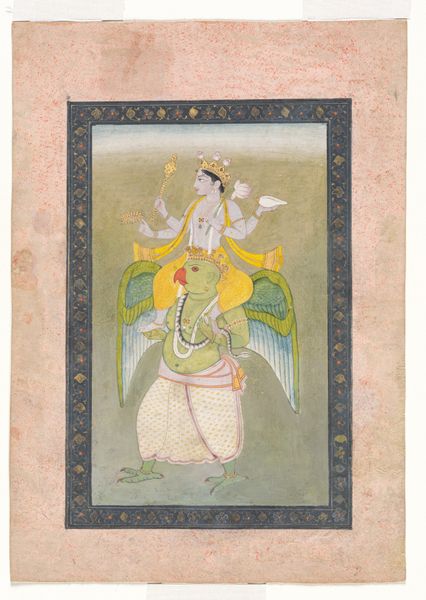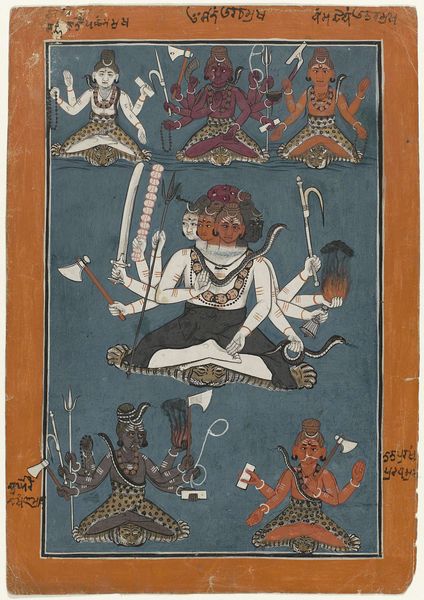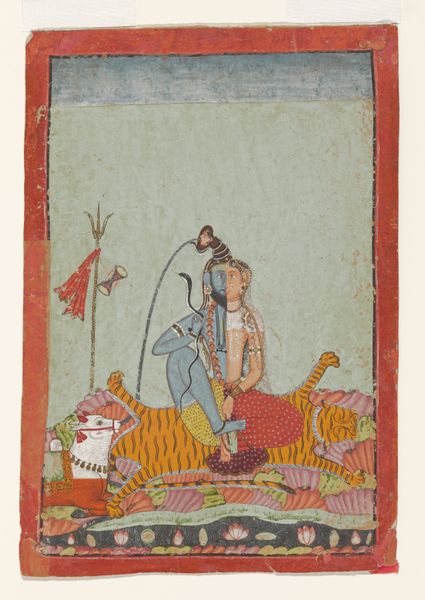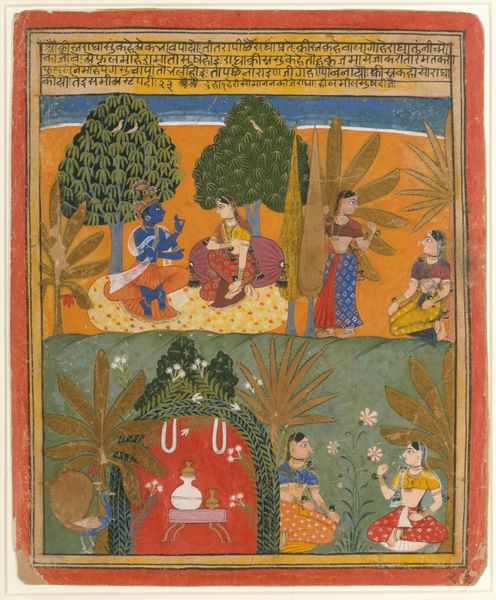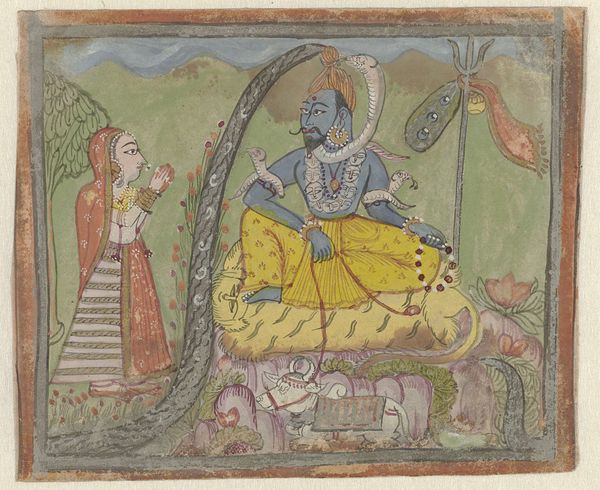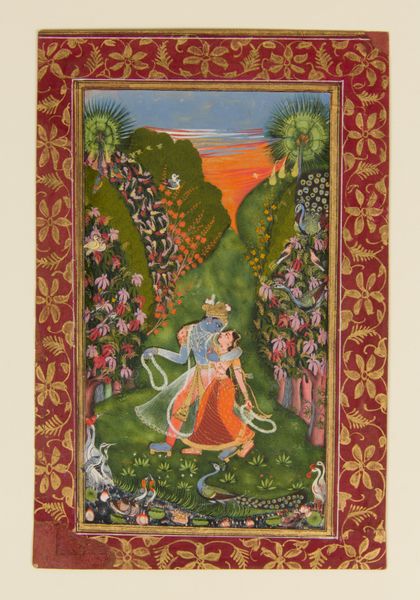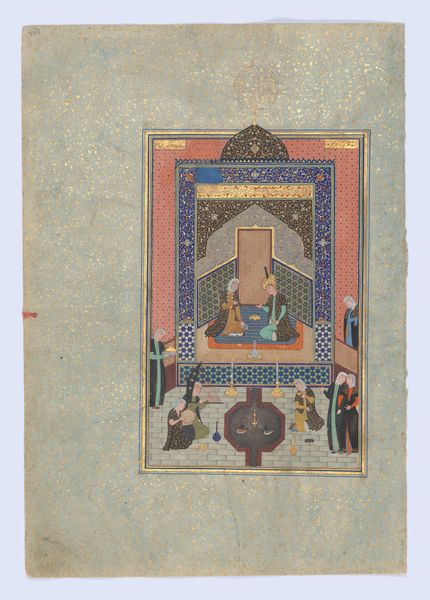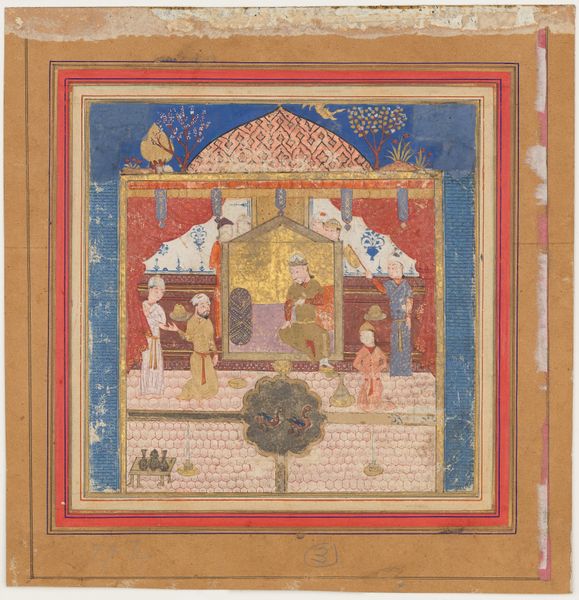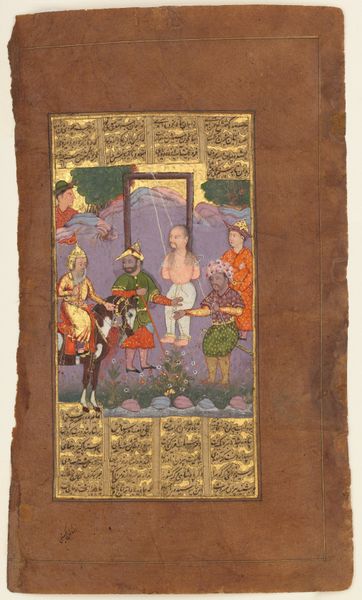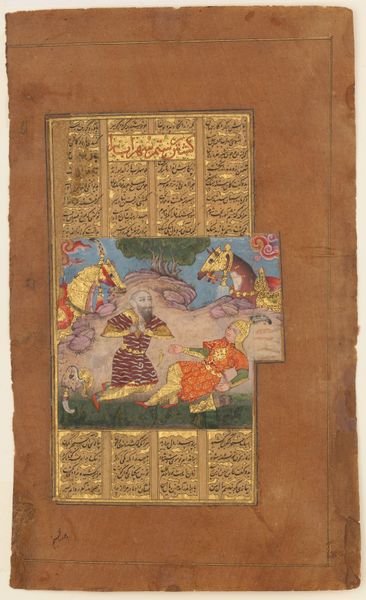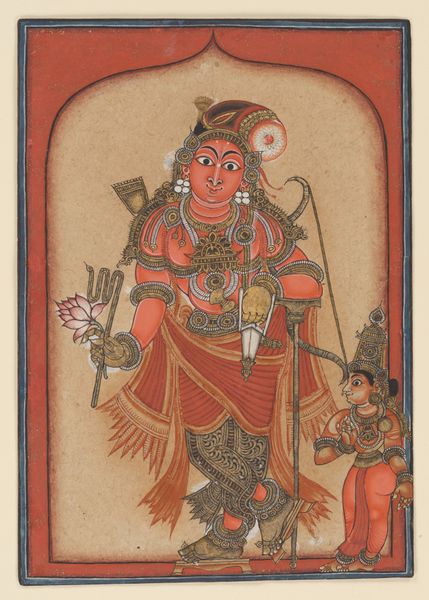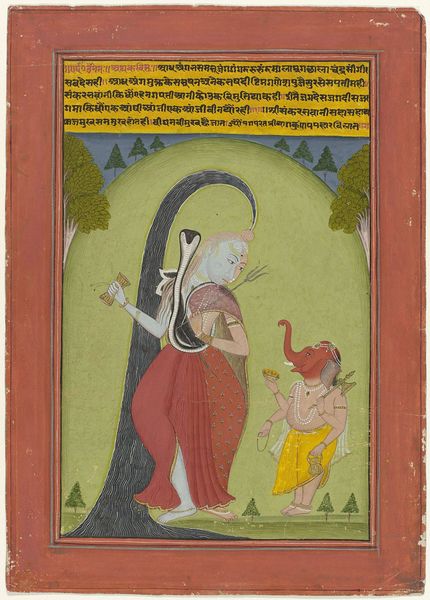
The Bodhisattva Avalokiteshvara Dispensing Boons: Folio from an Ashtasahasrika Prajnaparamita Manuscript 1100 - 1133
0:00
0:00
watercolor, ink
#
narrative-art
#
asian-art
#
watercolor
#
ink
#
earthenware
#
watercolour illustration
#
miniature
#
watercolor
Dimensions: Page: 2 3/4 x 16 7/16 in. (7 x 41.8 cm) Image: 2 1/2 x 1 15/16 in. (6.4 x 4.9 cm)
Copyright: Public Domain
Curator: Here we have a manuscript page, an Indian miniature rendered in ink and watercolor, dating roughly from 1100 to 1133. It is entitled, "The Bodhisattva Avalokiteshvara Dispensing Boons: Folio from an Ashtasahasrika Prajnaparamita Manuscript". Editor: What strikes me is the incredible vibrancy despite its age, and the very active central figure – almost dancing, surrounded by supplicants. It creates a feeling of dynamic benevolence. Curator: It’s indeed striking. The Ashtasahasrika Prajnaparamita, meaning "Perfection of Wisdom in Eight Thousand Lines," was a hugely important Mahayana Buddhist text. These illuminated folios often depicted scenes from the Buddha's life or bodhisattvas. The manuscript comes to us from the Mahavihara Master in Eastern India. Editor: Ah, Avalokiteshvara. The embodiment of compassion, reaching out, dispensing boons, almost as if their salvation depended on his movement alone. And all the little people stretching, grabbing, like vines reaching for sunlight. Curator: The red backdrop also serves a cultural role to highlight the importance and divine aspect of the Boddhisatva and those most devout around him. Red in this instance, served as the elite pigment, showing those connected through spiritualism or some other exclusive cultural construct. We should remember that these manuscripts weren't simply aesthetic objects; they served didactic purposes, helping to visualize and disseminate Buddhist teachings. Editor: I'm also curious about the visual language – that raised hand, the slightly tilted head of Avalokiteshvara. All those conventions must have carried such specific meanings to contemporary viewers. Curator: Absolutely. Iconography would have been instantly recognizable and readable to its intended audience, solidifying the Bodhisattva’s status and power. And remember the placement alongside the text – creating a multi-layered experience, pairing word and image in conveying sacred knowledge. Editor: Knowing the cultural context certainly enriches the experience. It shifts from merely admiring beautiful colors to something that vibrates with profound spiritual intention. Curator: Exactly. Studying art through this lens reminds us how art's influence in the era created so many traditions that we would never see without images such as this, offering visual representations of this intention. Editor: It becomes a kind of cultural memory, passed down through generations by use of common symbology we often do not get to view first-hand.
Comments
No comments
Be the first to comment and join the conversation on the ultimate creative platform.


